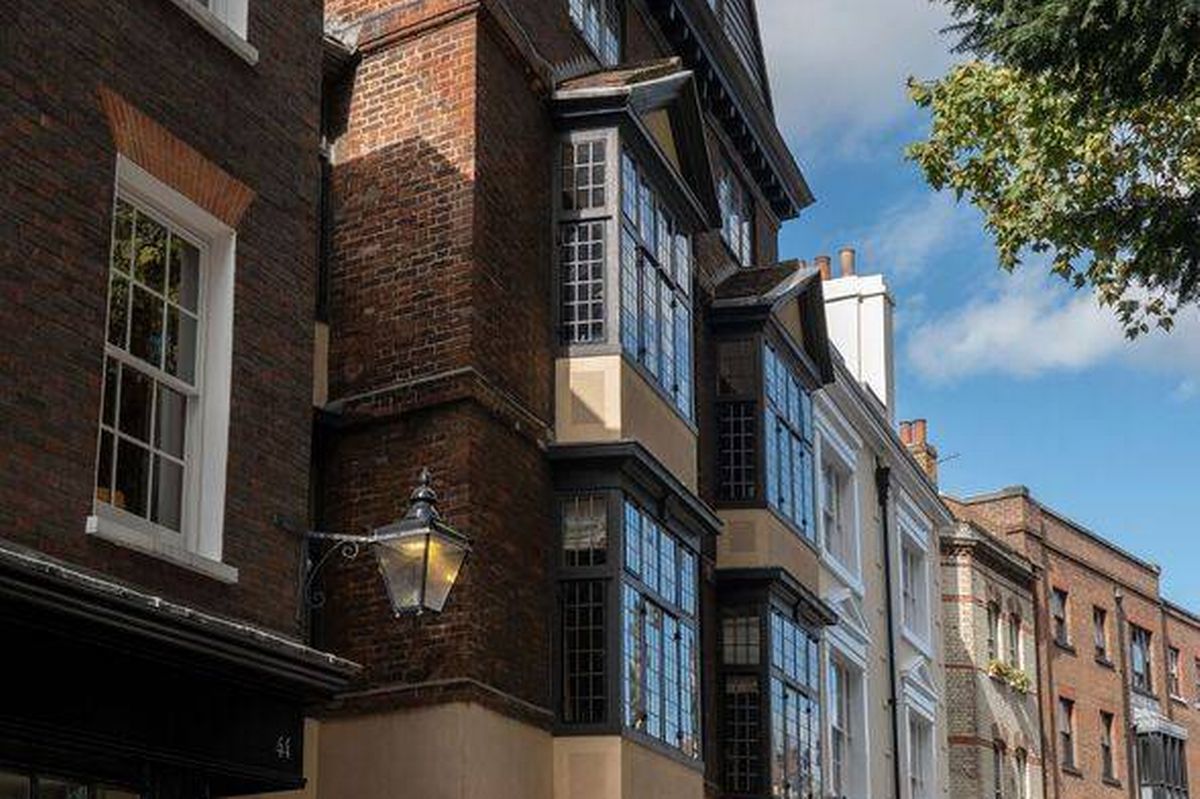This remarkable house has stayed standing through many major events, even surviving the Great Fire of London, despite huge areas of the city being destroyed, and attempts to have it demolished
London’s most intriguing landmarks often lie hidden in plain sight, tucked away down side streets. A prime example of this lies down the street of Cloth Fair.
This narrow road near Smithfield Market in the City of London, owes its name to its medieval past as a hub for merchants. Today, instead of bustling scenes of street trading, it’s mostly residential and offers a tranquil retreat from the city’s hustle and bustle.
Yet, one building stands out due to its historical significance. 41-42 Cloth Fair, built between 1597 and 1614, holds the distinction of being London’s oldest surviving house. But what truly sets this four-bedroom townhouse apart is its resilience through various tumultuous periods in history, including its survival of the Great Fire of London.
The Great Fire of London obliterated over 70,000 homes, leaving this townhouse amidst a sea of ruined properties. However, a tall brick wall encircling the property shielded it from the devastating flames, reports the Express.
But this wasn’t the first time the house had dodged disaster. During the Second English Civil War, when many city properties were razed, the house remained unscathed. Unfortunately, its builder, Henry Rich, wasn’t as fortunate. A Royalist, Rich was apprehended, tried, and ultimately beheaded within the grounds of the Palace of Westminster.
The property’s first occupant was William Chapman, who transformed the ground floor into an ale house. Over the centuries, the building has served various purposes, from a wool drapers to a tobacconist, and then a cutlery factory until the 1920s when it was sold.
Since then, it has functioned as a private dwelling and continues to be a home today. The 1920s nearly witnessed the demolition of 41-42 Cloth Fair. In 1929, there were proposals to raze the house along with numerous other historic buildings as part of a plan to improve sanitation in city housing.
Doubts were also raised about its structural integrity, and it was marked as dangerous. But remarkably, the house was spared from demolition and even survived the Blitz unscathed, while 1.7 million buildings across London were damaged and many historical landmarks were lost forever.
In 1995, new owners acquired the property, carried out extensive renovations, and won a City Heritage Award a few years later. One particularly noteworthy historical feature is a collection of signatures etched into the lead windows using a diamond pen.
These autographs belong to several high-profile individuals who have visited the house over the years, including Winston Churchill, the Queen Mother, John Betjeman, and J. B. Priestley.
READ MORE: ‘Europe’s answer to Hawaii’ is just 4 hours from UK with flights from £40READ MORE: I found Travelodge booking trick that can get you a bigger and better room
The house’s age, coupled with its location near a medieval priory, has even sparked rumours of skeletons entombed deep within its foundations.
Whether there’s any truth to these rumours or not, it seems these souls can rest undisturbed under the watchful protection of this seemingly indestructible house.
Have a story you want to share? Email us at webtravel@reachplc.com

